What am I used for?
What am I used for?
Names these tools that were used by the settlers of the 19th century.
Start
Congratulations - you have completed What am I used for?.
You obtained %%SCORE%% of %%TOTAL%%.
Your performance has been evaluated at %%RATING%%
Your answers are highlighted below.
Question 1 |
Names this image
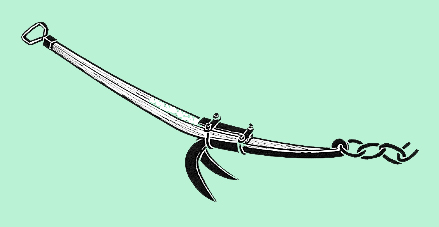
A | Lever to lift up stones Hint: I was useful in the heavy work of clearing the land. |
B | Harrow Hint: I was useful in the heavy work of clearing the land. |
C | Stump remover |
Question 1 Explanation:
Once the trees were cut, the branches burnt, the pioneers still had to clear the land, if they wanted to have large fields to cultivate potatoes, grain or hay. The work was faster if they used the strength of a horse or an ox to pull stump removers, like this one. With the horse in front, attached to the stump remover, the farmer would guide the operation.
Question 2 |
Names this image
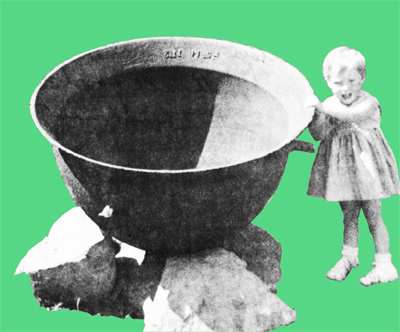
Question 2 Explanation:
Copper or bronze pot, deep and round that the settlers used to make ash by burning branches and stumps from trees that they cut. The potash was useful in many ways, such as washing, bleaching and dying wool and cotton, making glass and china. The price of potash was high in the 19th century and so the settlers made and sold a lot of it. For some, it was a major source of money.
Question 3 |
Names this image
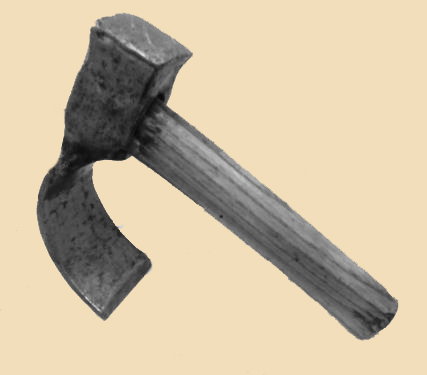
A | Small axe |
B | Scraper to de –ice the runners of a sleigh Hint: I am used to make barrels and to work in wood. |
C | Miner’s pick Hint: I am used to make barrels and to work in wood. |
Question 3 Explanation:
This adze or little axe was part of the tool boxes of barrel makers and carpenters. They used it to prepare boards. The blade is set across the end of the handle and curves inward.
Question 4 |
Names this image
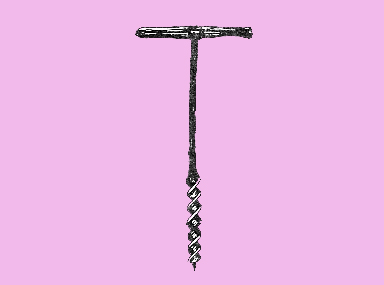
A | Hand drill |
B | Cork screw Hint: I helped pioneers build houses and barns. |
C | Drill for ice fishing Hint: I helped pioneers build houses and barns. |
Question 4 Explanation:
The large borer called an augur served to cut holes in big boards used in construction of houses and barns. The boards were held together with a wooden peg inserted in the hole made by the auger. It is the ancestor of today’s electric drill.
Question 5 |
Names this image
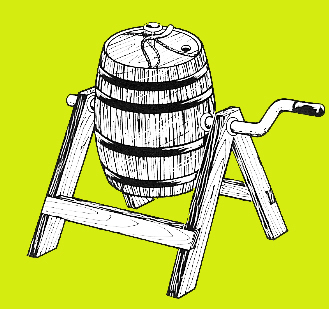
A | Keg for beer on tap Hint: Without me, the pioneers would have had to have eaten their bread plain or dry. |
B | Washing machine Hint: Without me, the pioneers would have had to have eaten their bread plain or dry. |
C | Equipment to make butter |
Question 5 Explanation:
The mixing or churning of cream from milk made butter. Cream was placed in a barrel of the churn, enclosed so that the cream could not spill out. Before churning the butter, the housekeeper poured off the whey or butter milk and used it in various recipes such as for desserts and meat pies.
Question 6 |
Names this image
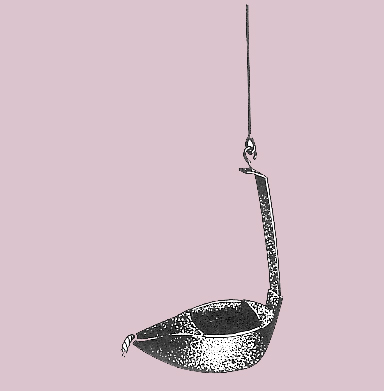
A | Ladle Hint: I was especially appreciated during the long winter nights. |
B | Lamp |
C | Hanging pot Hint: I was especially appreciated during the long winter nights. |
Question 6 Explanation:
This lamp hung from a hook on the wall or ceiling. The wicked soaked up the oil or melted fat, held in a container. Wax was very expensive for the colonials. This basic lamp gave a low level of high but had a high risk of fire.
Question 7 |
Names this image
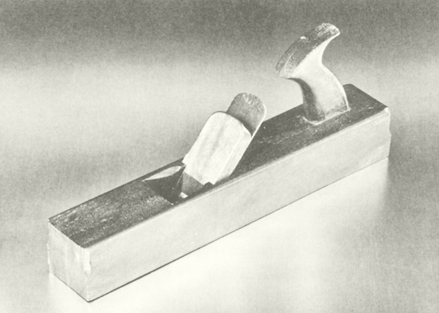
A | Boot jack Hint: Carpenters were never without me. |
B | Hand held planer |
C | Barn door handle Hint: Carpenters were never without me. |
Question 7 Explanation:
The plane is a tool used by carpenters to smooth or remove wood, to make molding and grooves. The cutting or chisel edge, bevelled, that is on an angle, works the
wood on a 45 degree angle. The term "trying or jointing plane" describes the largest plane with a handle.
Question 8 |
Names this image
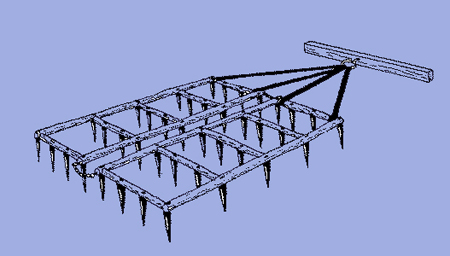
A | Comb to card sheep's wool Hint: I was used mostly in the spring time for seeding. |
B | Large rake to work the land |
C | A tool to cut grooves on icy surfaces to make them less slippery Hint: I was used mostly in the spring time for seeding. |
Question 8 Explanation:
Ploughing tool made up of a bar onto which picks or disks were attached and pulled by horses or oxen to break up clumps of the soil or to cut drill for the seeds.
Question 9 |
Names this image
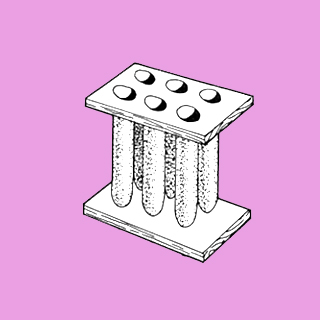
A | Mold for popsicles Hint: I have become less popular with the coming of electricity in the home. |
B | Pencil holder Hint: I have become less popular with the coming of electricity in the home. |
C | Mold for candles |
Question 9 Explanation:
Candle molds are made with 6 tubes placed between 2 strips of metal. First a wick was strung through the hole in the base of the mold, then melted animal fat or suet was poured into the tubes. The wick was attached to a dowel, placed on top of the mold, held straight and tight until the suet had hardened.
Question 10 |
Names this image
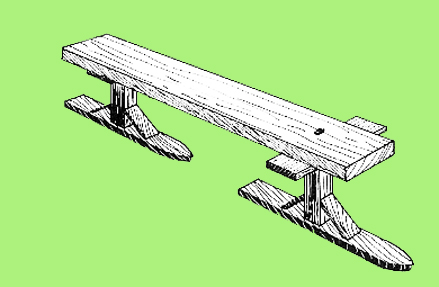
A | Toboggan on skis |
B | Skate press Hint: I made children laugh and cry with delight. |
C | Ironing board Hint: I made children laugh and cry with delight. |
Question 10 Explanation:
An old beam, 2 simple runners made from scrap metal, were enough to make a toboggan. The longer the beam, the more the children, the sled can accommodate as they slide down the hills at great speed. The rides comes to an end with reams of laughter from the excited passengers.
Question 11 |
Names this image
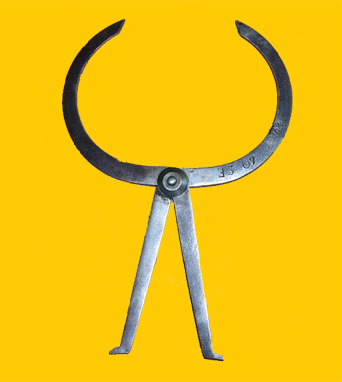
A | Tongs to arrange logs in a fireplace Hint: I am part of the compass family used in geometry. |
B | Instrument to measure, used by clock makers |
C | Fork to load and unload bales of hay Hint: I am part of the compass family used in geometry. |
Question 11 Explanation:
Caliper - a compass made of iron with 2 sets of movable arms used to measure the exterior of a diameter or the interior diameter of a tube or cylinder. The name comes from the fact that the silhouette resembles a dancer, possibly on pointed toes. The upper arms look like the dancer with her arms stretched high over her head and the lower arms look like her legs.
Once you are finished, click the button below. Any items you have not completed will be marked incorrect.
Get Results
There are 11 questions to complete.
← |
List |
→ |
Return
Shaded items are complete.
| 1 | 2 | 3 | 4 | 5 |
| 6 | 7 | 8 | 9 | 10 |
| 11 | End |
Return
You have completed
questions
question
Your score is
Correct
Wrong
Partial-Credit
You have not finished your quiz. If you leave this page, your progress will be lost.
Correct Answer
You Selected
Not Attempted
Final Score on Quiz
Attempted Questions Correct
Attempted Questions Wrong
Questions Not Attempted
Total Questions on Quiz
Question Details
Results
Date
Score
Hint
Time allowed
minutes
seconds
Time used
Answer Choice(s) Selected
Question Text
All done
Vous avez besoin de plus d'entraînement !
You need more training!
Persevere !
Not bad !
Good work !
Perfect !
